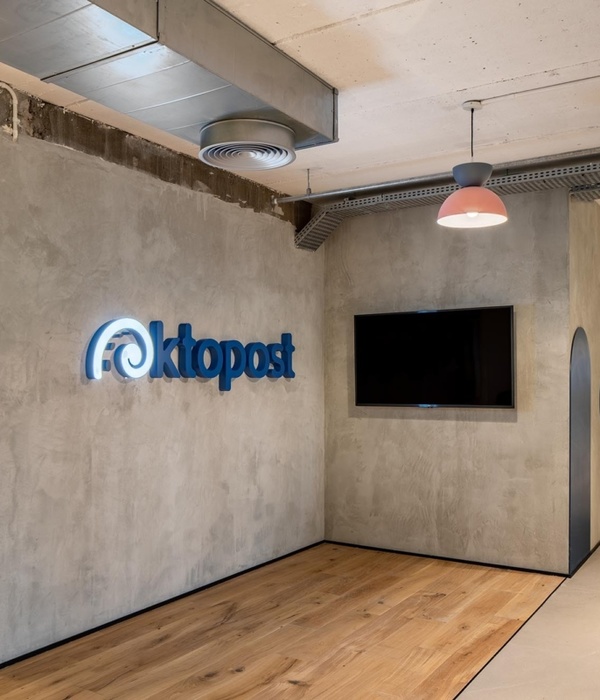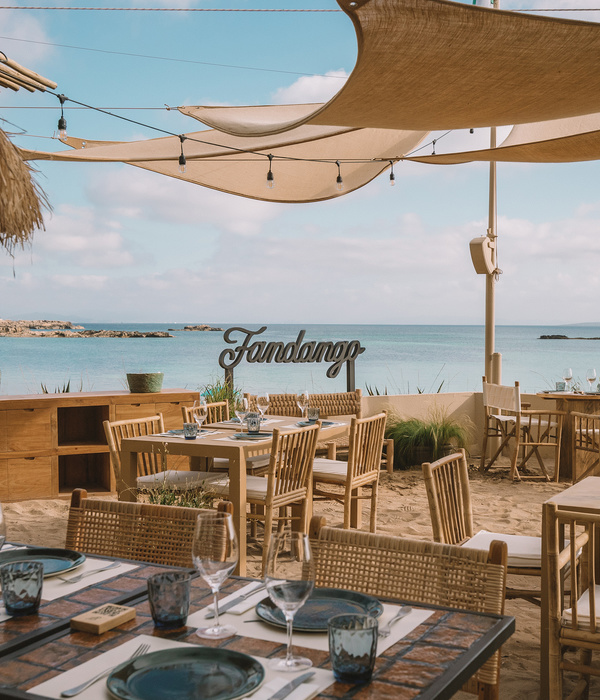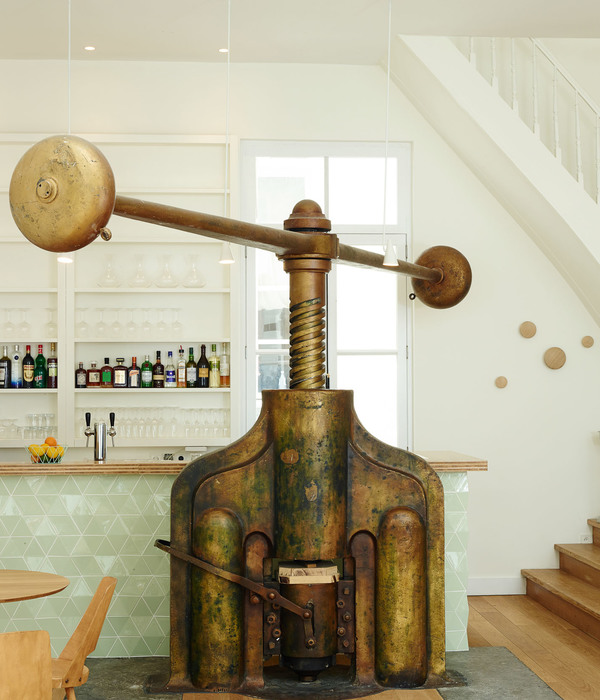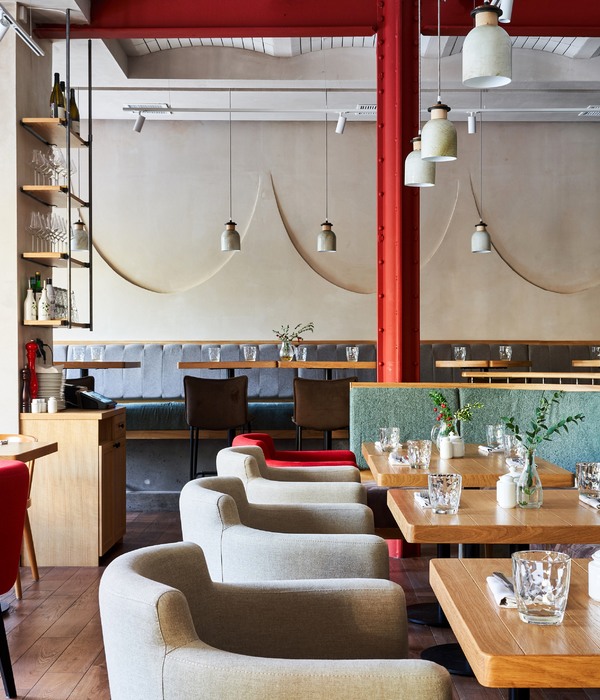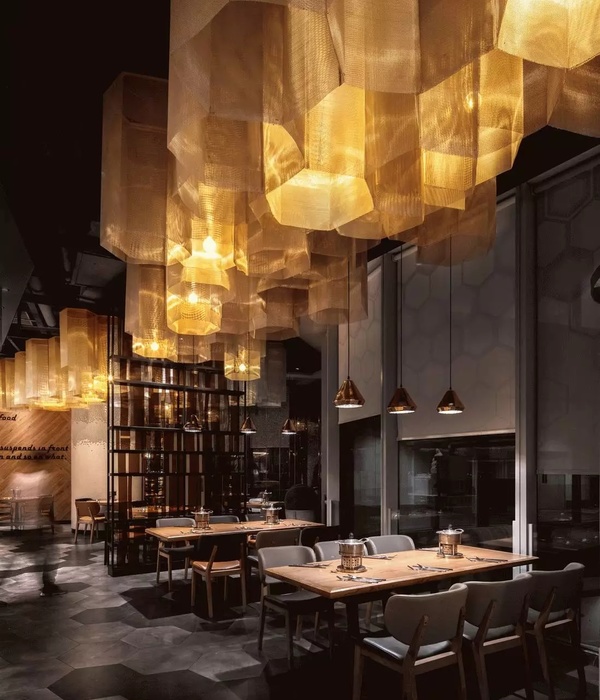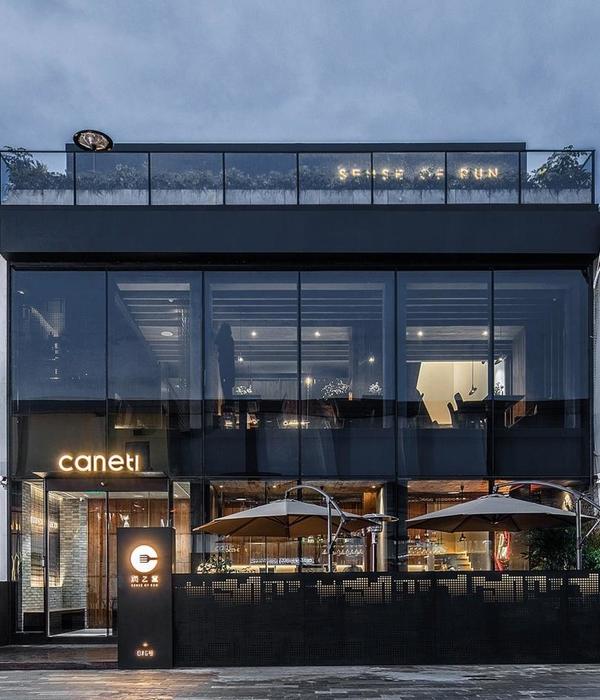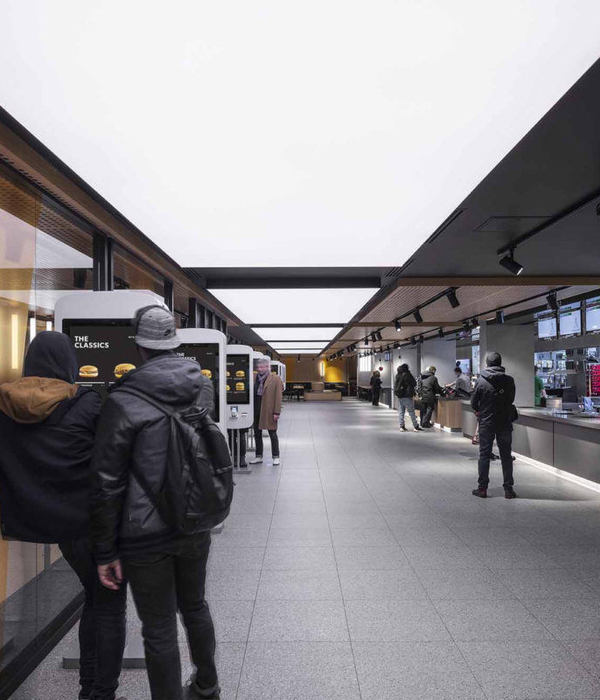来自
ASLA
+StL: Growing an Urban Mosaic in St. Louis /
TLS Landscape Architecture
,
Shanghai OBJECT TERRITORIES
,
[dhd] derek hoeferlin design
项目概述
PROJECT STATEMENT
圣路易斯市中心的肌理呈现出断裂之态。在今天,一条浅谷从城市中心穿过,由森林公园自东向西地延伸至密西西比河,并将20世纪建设的基础设施融入其中:高速公路沿着货运铁路和公共交通铁路铺设,并且各自拥有辅助的立体交叉道、调车场以及安防系统。这些分支将城市的各个区域连接起来,但同时也在南北之间的街区形成了实体和心理上的屏障。和美国的许多其他城市一样,这样的基础设施往往凌驾在一个被夷为平地的街区或者河岸生态圈之上。
该项目的团队由来自多个领域的专业人士组成,他们在相关问题上拥有丰富的经验,并且与周围的社区建立了密切联系。总体规划在基础设施形成的空地内恢复了生态、文化和经济潜力,同时深入周边社区以提高连通性、增强既有的场所价值并综合正在进行的设施建设。项目的成果是建造了一个多方向的城市枢纽,旨在利用圣路易斯的现有优势,通过渐进且灵活的总体规划方案为城市的未来赋予崭新面貌。
Downtown St. Louis is divided. Today, a shallow valley running east to west from Forest Park to the Mississippi River through the center of the city holds the infrastructure of the 20th century: freeways slip fluidly alongside bundled freight, regional, and commuter rail, each with their attendant interchanges, grade-separations, switching yards, and security. These strands connect the city to its region but create a physical and psychological barrier between the neighborhoods to the north and south. As in so many other cities around the US, this infrastructural void sits atop a neighborhood razed, a riparian ecology interred.
Our approach was founded in the assembly of a broad-based team of individuals experienced in the issues and engaged in the communities surrounding the project. Our masterplan proposal restores ecological, cultural, and economic potential within the space of this void, while simultaneously reaching deep into the surrounding communities to stimulate connectivity, strengthen existing places of value, and synthesize investments already underway. The result is a multi-directional armature that focuses efforts to build on St. Louis’ existing strengths and fosters new urban futures with this incremental and flexible masterplan.
▲+StL城市绿道总体规划:东西向走廊开发与南北社区投资相结合的战略性干预。+StL GREENWAY MASTER PLAN: A strategic intervention of east-west corridor improvements combined with north-south community investments
项目说明
PROJECT NARRATIVE
介绍
响应大河绿道组织(GRG)提出的在圣路易斯市中心(森林公园和大拱门之间)构建城市绿道的要求,“+StL”总体规划方案提出了一种原型式的、资源密集型的大规模景观干预项目。而本着GRG以公民参与的方式建立区域绿道网络的精神,项目团队所提出的总体规划解决了城市核心地带的连通性以及恢复力的问题,同时将走廊周边的社区、既有设施以及正在进行的特殊项目整合进来。项目团队的组成者包括当地的专家、领导人和倡议者,以及具有国际经验的设计师、规划师、工程师和顾问,所有人都投身到完整的设计和决策过程当中。最终的规划方案提出了具体的措施去解决城市面临的公平、公共卫生以及交通方面的挑战,主要分为三层战略:
经济资产、生态环路和公平扩展。
项目伦理观:从冲突到协同
大城市中的项目常常是在分割社区的基础上完成的。项目团队与圣路易斯市民以及倡议团体进行了数次会面,了解到了大众对于流离失所、浪费以及不平等潜在现象存在的焦虑。可持续发展的传统定义是试图在环境保护、经济增长与社会公平之间取得平衡,尽管各方利益之间存在着一些难以解决的冲突。+StL方案试图将这种三方责任想象为一种可以共赢而非利益对立的催化剂,并且提出了三个不同尺度的参与途径:
物理途径:需要提供可负担的、及时且可信赖的移动方式,以及人人可接近的场所和体验。
社会途径:通过与各类组织的合作、服务系统的空间分布以及丰富的公共康乐设施,实现面面俱到的规划并优先考虑能够鼓励社区凝聚力的投资。
经济途径:为各类土地利用类型留出空间以创造人民可负担的生活场所,并为之提供获得优质教育、娱乐设施以及就业的机会。
生态环路
项目团队分析了中央绿道的水文状况,以寻找降低既有硬性基础设施负荷的可能。铁路经过的低洼场地对于拦截雨水十分有利,因此可以恢复草原、林地河岸以及湿地的原生群落。从停车场和堆货场恢复的高草草原生境能够提高当地花卉和动物的多样性,同时为迁徙鸟类提供适宜的栖息地。沿绿道分布的森林和草地将为圣路易斯地区提供重要的生态系统和文化服务。湿地旁边的木栈道、小径和桥梁以及排水路径将促进公众与新生栖息地以及物种的互动,使居民能够近距离地享受城市的自然风光。
在低处的走廊外,生态环路构成了绿色的水文基础设施,扩展了既有的渗透性土地,并在圣路易斯的四个主要的公园之间置入了生境走廊。从克莱顿大道森林公园延伸的东西向路径,以及沿着太平洋联合铁路通往Chouteau’s Landing的Metro-Link交通线,共同为圣路易斯带来了独特而崭新的体验,同时将生态、林地、溪流和湿地与城市的工业铁路融为一体。南北向的环路连接了Fairground公园、Tower Grove公园、密苏里植物园以及介于这些公园之间的街区,并通过东西向的绿道带来能够改善环境健康和生物多样性的重要道路和生境走廊。
公平扩展
虽然圣路易斯的当地资产遍及了整个城市,但经济却主要集中在将城市一分为二的东西走廊沿线。中央基础设施走廊南北两侧的区域有着全市最低的汽车拥有率、最高的贫困率、最低的健康指标以及最多的儿童人数。公平扩展措施的实施为一些城市中服务水平最差的区域提供了社会、经济和物质上的改善机会。项目团队中包含了在这些社区中有着多年组织和领导经验的成员。方案中提出的沿Newstead向北扩张以及沿Compton向南扩张的做法将会让北部的Ville、Penrose和O’Fallonand社区以及南部的Gravois Park、Tower Grove South以及Dutchtown等社区获得发展。广泛的分析将帮助找到改善街道横截面的方法以增加照明设施、自行车道、交通缓解设施,从而为步行者提供更安全的环境。
经济资产
作为竞赛过程的一部分,GRG组织了大量的利益方研讨会,以收集来自工业、商业和社区代表的声音。圣路易斯是众多世界一流机构的所在地,这些机构的发展历史与圣路易斯在20世纪初作为河流与铁路城市的杰出地位有着密不可分的联系。项目团队将这些机构的意见采纳为整体规划的出发点。华盛顿大学、华盛顿大学医学中心、圣路易斯大学、圣路易斯大学医学中心、哈利斯托州立大学以及圣路易斯大学法学院等学府的聚集吸引了各个层级的就职者和学生居民。大艺术区(Grand Arts District)则凭借福克斯剧院(1929)、鲍威尔交响音乐厅(1925)、普利策艺术基金会(2001)以及圣路易斯当代艺术博物馆(1980, 2004)等一系列现代和当代文化设施为总体规划构建了一个欣欣向荣的全新艺术场景。新型科技和成熟科技行业正以创新的方式促进着各类企业的发展,使废弃的空间得到填补。虽然这些资产有许多坐落在城市的东西向走廊内,它们任然是圣路易斯市中心相互独立的岛屿。
提案建议首先以这些中心为据点进行大规模的投资,使资本跟随人才,人才跟随场所。最具活力和价值的场所需要具备多样性和包容性,提供丰富的功能以及促进联系和娱乐的空间。从华盛顿大学和森林公园出发,穿过Cortex、Grand Center、圣路易斯大学和市中心,城市绿道将创造一个新的公共领域和互相连通的网络,以穿越城市中心的方式连接这些岛屿。精心规划的绿道网络能够引领周边区域的房地产市场的发展并吸引新的居民、公司和投资。
StL的扩张
通过构建环路、扩大范围和增加资产,+StL总体规划将为已经融入圣路易斯生活的设施和系统注入新的体验和价值。+StL绿道将成为一条文化之路,构成绿道的每件事物都与艺术和文化的多样化和包容性息息相关,并因其包含的众多艺术和文化群体、个人以及更广泛的创意社区而成为一个集工作、展示和娱乐于一体的备受欢迎的场所,同时为绿道吸引更多参观的游客。
▲+StL区域概览:绿道总体规划与既有的大河绿道步行路线、铁路网以及计划中的公共交通投资互相结合。 +StL REGIONAL OVERVIEW: The Greenway master plan is integrated with existing Great Rivers Greenway regional trails, trailnet pathways, and planned public transportation investments
▲集体记忆+StL:历史性的事件、人民和建设共同塑造了圣路易斯的历史和城市精神,包括工业化进程、人口迁移、郊区化以及民权运动等。COLLECTIVE MEMORY +StL: The historical events, people, and projects that have shaped St. Louis and defined its spirit over time: industrialization, population migration, suburbanization, and the civil rights movement
▲遗产与服务设施调查:项目团队的成员包括许多对正在进行的小规模投资及开发十分熟悉的当地历史学家和社区倡议者。项目团队对走廊北部和南部的大量资产进行了清点,以记录具有历史和社会价值的场所。HERITAGE AND SERVICES SURVEY: Our team included local historians and community advocates familiar with ongoing small-scale investment and development. We conducted extensive asset inventories north and south of the corridor to document places of historic and social value.
▲路径和扩张策略:方案提出的生态环路、公平扩展和经济资产的层级式策略均建立在社区清单上,以确保能够与既有设施、社区需求和当地利益方相适应。ROUTE AND EXTENSIONS STRATEGY: Our layered strategies of Ecological Loops, Equitable Extensions, and Economic Assets are built on our community inventory, ensuring a suitable fit with existing projects, neighborhood needs, and local stakeholders.
▲社区投资:功能规划。圣路易斯拥有强大的街道社区。绿道的南北轴线为圣路易斯广场一年一度的Whitaker夏季音乐会提供了补足性的空间,并为Ivory Perry公园带来了举办各种美食和节庆活动的机会。NEIGHBORHOOD INVESTMENTS: PROGRAMMING. St. Louis neighborhood communities are strong. The N-S axis of the greenway compliments the annual Summer Whitaker Concert Series at St. Louis Place and Ivory Perry parks we propose additional happenings, a Friday Food Truck event, street dinners and festivals.
▲社区投资:连接。考虑到北面的Fairground 公园,项目团队在公园中创造了新的空间,并改善了其与当地的连接。交通空间规划为自行车道网络的优化以及居民区、娱乐场地和就业中心的连接创造了机会。NEIGHBORHOOD INVESTMENTS: CONNECTIONS: As the counterpoint to Fairground Park in the North, we propose new programs in the park and improved local connections. Traffic diets provide space for improved cycling networks and link between residential districts, recreational sites, and job centers.
▲从森林公园望向大拱门:线性走廊内部的一系列介入改变了当下的空间空缺,具体方式包括建立艺术和文化表演空间、人行道和骑行者的连接以及24小时的服务设施。FOREST PARK TO THE GATEWAY ARCH: Interventions in the linear corridor transform the current spatial void through curated industrial installations, art and cultural performance spaces, pedestrian/cyclist connections, and 24-hour programming.
▲连接设施:桥梁和地下通道。繁忙的交通走廊分隔了森林公园和周围的社区。宽阔的人行道和自然友好型地下通道与精心设计的桥梁共同连接了公园、既有的绿地以及华盛顿大学和医学园区。LINKING ASSETS: BRIDGES & UNDERPASSES: Busy traffic corridors separate Forest Park from its surrounding neighborhoods. Generous pedestrian and nature friendly underpasses and delicate bridges link the park, existing Greenway, Washington University, and hospital district.
▲基础设施生态:对圣路易斯市区的动植物研究揭示,鸟类、授粉媒介和小型脊椎动物可以在外来土壤和层级划分最少的情况下重新在基础设施景观中建立栖息地。INFRASTRUCTURAL ECOLOGIES: Studies of flora and fauna thriving in urban St. Louis reveal potential communities of birds, pollinators, and small vertebrates that can re-inhabit this infrastructural landscape with minimal imported soils or re-grading. 20th-century heritage is recontextualized by this new urban wilderness.
▲场地的考古学:市场街和森林公园大道被合并为一条连续的街道。在这些基础设施之间,一座考古学和历史博物馆将探索米尔溪谷城市移除计划以及被清除的社区所留下的深刻印记。ARCHAEOLOGY OF PLACE: Market Street and Forest Park Boulevard are merged as a continuous Great Street. In the space between these pieces of infrastructure, a sunken Archeology and History Museum will explore the deep traces of the Mill Creek Valley Urban Removal Project and its erased communities.
▲联动密西西比:+StL绿道延伸至动态的河岸地带,提供了更多通往城市主要景点的路径。绿道网络还将触及并连接圣路易斯东部的社区。ENGAGING THE MISSISSIPPI: The +StL greenway reaches the dynamic river shore, increasing access to the city’s predominant landscape feature. The greenway network also reaches to and connects with the communities in East St. Louis.
▲城市森林走廊:传统上相互分开的绿色区域如缓冲带、后退空间和入口院落等被重新连接起来,并沿着I-64州际公路和堆车场形成一个连贯的城市森林,起到拦截污染和雨水径流的作用。新的开放空间在被重新利用的建筑物之间建立了新的关系。URBAN FOREST CORRIDOR: Traditionally separate green areas such as buffers, setbacks, and access yards are linked to create a continuous urban forest along I-64 and the railyards to intercept pollution and stormwater runoff. The renewed open spaces provide opportunities for new relationships among reused buildings.
▲恢复栖息地:新的栖息地通过轻度的分级工程得以建立,以创建小型的集水区域以及随着时间推移将布满植物的高地。RESTORING HABITATS: New habitats are built through minor re-grading works the ground to create small water collection zones and uplands that, over time, are colonized by plants from the region.
▲城市草原湿地:方案提出在MetroLink和Amtrak之间的旧停车场所在的分水岭末端建立一个湿地公园。新的高草草原和湿地有助于改善当地动植物的生物多样性,同时为迁徙鸟类提供适宜的栖息地。URBAN PRAIRIE WETLAND: A Wetland Park is proposed at the end of the local watershed on the site of a former parking lot between the MetroLink and Amtrak alignments. New tall-grass prairie and wetland supports the biodiversity of local flora and fauna while providing suitable habitat for migrating birds.
▲城市中的自然:这一具有生物再生能力的场地位于绿道的南端,为新兴的市区提供了环境教育场地、观察鸟类、青蛙和蝙蝠的场地、自然徒步短道以及举办草原野餐等休闲活动的机会。NATURE IN THE CITY: This biologically productive site anchors the southern end of the greenway and provides opportunities for environmental education, bird, frog, and bat watching, short nature hikes, and prairie picnics- -unique recreational programs for the emerging downtown district.
PROJECT NARRATIVE
INTRODUCTION
Asked by the Great Rivers Greenway (GRG) to envision an urban greenway in the heart of St. Louis between Forest Park and the Gateway Arch, our masterplan proposal, “+StL”, envisions an alternative to the prototypical, resource-concentrating big landscape intervention project. Instead, following in the spirit of GRG’s citizen-involved approach to building regional greenway networks, we propose a masterplan that resolves the connective and restorative ambitions at the core while investing in the communities, existing assets, and unique projects underway around this corridor. Our team was assembled on this principle and includes local experts, leaders, and advocates as well as designers, planners, engineers, and advisors with international experience, each committed to a team-wide design and decision-making process. The resulting masterplan proposes concrete measures to address the challenges of equity, public health, and mobility that the city is facing through a layered strategy of three components: Economic Assets, Ecological Loops, and Equitable Extensions. These three dimensions of our masterplan articulate strategies for distributing economic development, introducing biodiverse and hard-working habitats, and planning for equitable access to jobs, institutions, and public space.
PROJECT ETHICS: FROM CONFLICT TO SYNERGY
Big urban projects are too often sites of community division. Our meetings with resident and advocacy groups in St. Louis attested to underlying anxieties of displacement, waste, and inequality. A traditional definition of sustainable development attempts to balance environmental conservation, economic growth and social equity, though intractable conflicts between these corners of interest. +StL proposes to reimagine these tripartite responsibilities as catalysts with shared interests, not as opposing interests. Our plan considers three dimensions of access.
PHYSICAL ACCESS requires affordable, timely, reliable mobility as well as universal access to place and experience.
SOCIAL ACCESS prioritizes inclusive programming and investments in neighborhood cohesion through partnerships with organizations, the spatial distribution of services, and a rich array of public amenities.
ECONOMIC ACCESS makes space for a variety of land-use types for affordable places to live, access to quality education and recreation, and entryways into work.
ECOLOGICAL LOOPS
The hydrology of the central greenway was analyzed for opportunities to reduce loads on the existing hard infrastructures. The low railway basin site is topography ideal for intercepting stormwater, thus reestablishing native communities of prairie, woodland, riverside, and wetland. Tallgrass prairie habitat, reclaimed from parking lots and storage yards, will support local floral and faunal biodiversity and provide appropriate habitat for migrating birds. Active urban forest and prairie along the Greenway will provide important ecosystem and cultural services to the St. Louis area. Public interaction with newly visible habitats and species can be explored over boardwalks, trails, and bridges beside wetlands and drainage ways, reducing the barriers that prevent residents from enjoying nature in the city.
Beyond the low corridor, the Ecological loops constitute the green hydrological infrastructure to expand pervious ground and draw habitat corridors between the four major parks in St. Louis. The West-East route from Forest Park at Clayton Avenue and the Metro-Link line along the Union Pacific Railyard to Chouteau’s Landing allows a new experience completely unique to St. Louis integrating ecology, woodlands, streams, and wetland ecologies with St. Louis’ industrial railroad. The North-South loops connect Fairground Park, Tower Grove Park, the Missouri Botanical Garden, and the neighborhoods in between them with the central East-West Greenway providing vital neighborhood access and habitat corridors for improved environmental health and biodiversity.
EQUITABLE EXTENSIONS
Though local assets are spread throughout St Louis, economic are concentrated along the East/West corridor that divides the city in half. The lowest car ownership, highest poverty rates, worst health indicators and largest concentrations of children in the city live in the areas north and south of the central infrastructure corridor. The alignment of the equitable extensions represents a starting point for the city to invest in greater access — social, economic, and physical — for some of the city’s least served neighborhoods. Our team included individuals who have worked as organizers and advocates for these communities for many years. The proposed extensions to the North along Newstead and to the South along Compton will grow the neighborhoods such as The Ville, Penrose, and O’Fallon in the North and Gravois Park, Tower Grove South, and Dutchtown in the South. Extensive analysis was done to find ways to improve street cross-sections to add lighting, bike lanes, traffic calming measures to make these places safer for pedestrians. Likewise, our planners studied existing and planned transport networks and proposed expansions and improvements to public transit frequency and extension.
ECONOMIC ASSETS
As part of the competition process, the GRG organized a number of stakeholder group workshops representing industry, commerce, and community groups. St. Louis is home to world-class institutions whose heritage linking to its preeminence as a river and rail city in the early 20th century. These institutions are still relevant, and we sought their input as a point of departure in our masterplan. A concentration of higher education institutions including Washington University, Wash U Med Center, St. Louis University, SLU Med Center, Harris-Stowe State University, and SLU Law School draw all levels of employment as well as student residents. Grand Arts District with its historic facilities like the Fox Theatre (1929) and Powell Symphony Hall (1925) along with newer additions like the Pulitzer Arts Foundation (2001) and the Contemporary Art Museum St. Louis (1980, 2004), are anchors for a newly blossoming arts scene. Emerging and established tech industries are bringing new entrepreneurship and infilling derelict spaces in innovative ways. Though many of these assets are located within the central east-west corridor of the city, they remain disconnected islands in the center of the St. Louis.
We propose that large scale investment in any urban project builds from these centers first. Investment capital follows talent, and talent increasingly follows place. And the most dynamic and valuable places embrace diversity and inclusion, a mix of uses, and offer places for connection and fun. From Washington University and Forest Park, through Cortex, Grand Center, Saint Louis University, and Downtown, the Greenway will provide a new public realm and connective tissue, connecting the island in new ways through the center of the city. Enhancing access to these assets with new, well-programmed greenway networks can support the real estate market of their surrounding areas and attract new residents, companies, and investment.
AMPLIFYING STL
Through loops, extensions, and assets, the +StL Greenway will build new experiences and new value into systems already embedded in St. Louisan life. The +StL Greenway will be a Cultureway, where everything about the DNA of the Greenway relates to diverse and inclusive expressions of arts and culture, becoming a beloved place in the city for its many diverse arts and cultural groups, individuals, and the broader creative community to work, present, delight, and inspire all visitors to visit the Greenway.
{{item.text_origin}}





